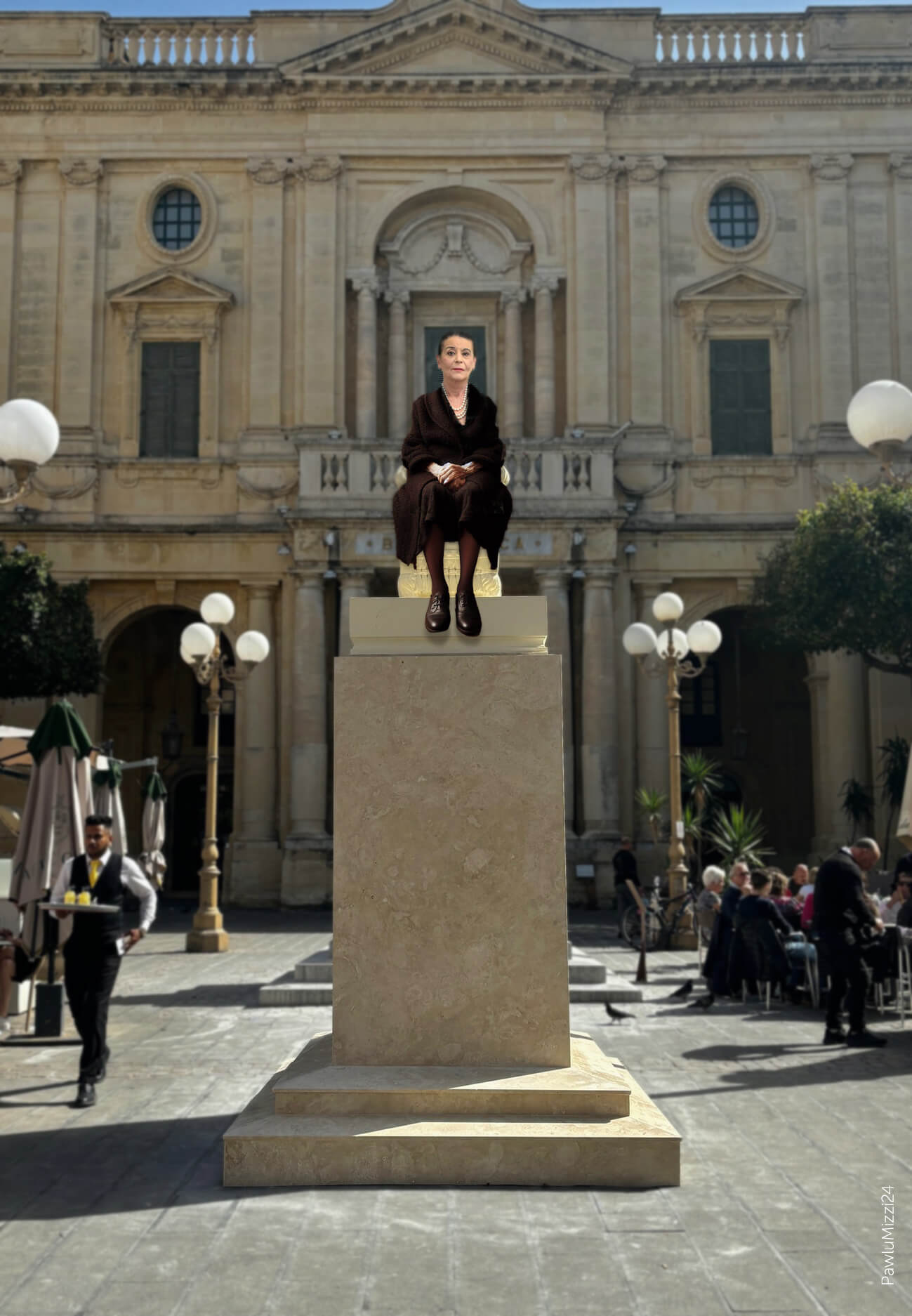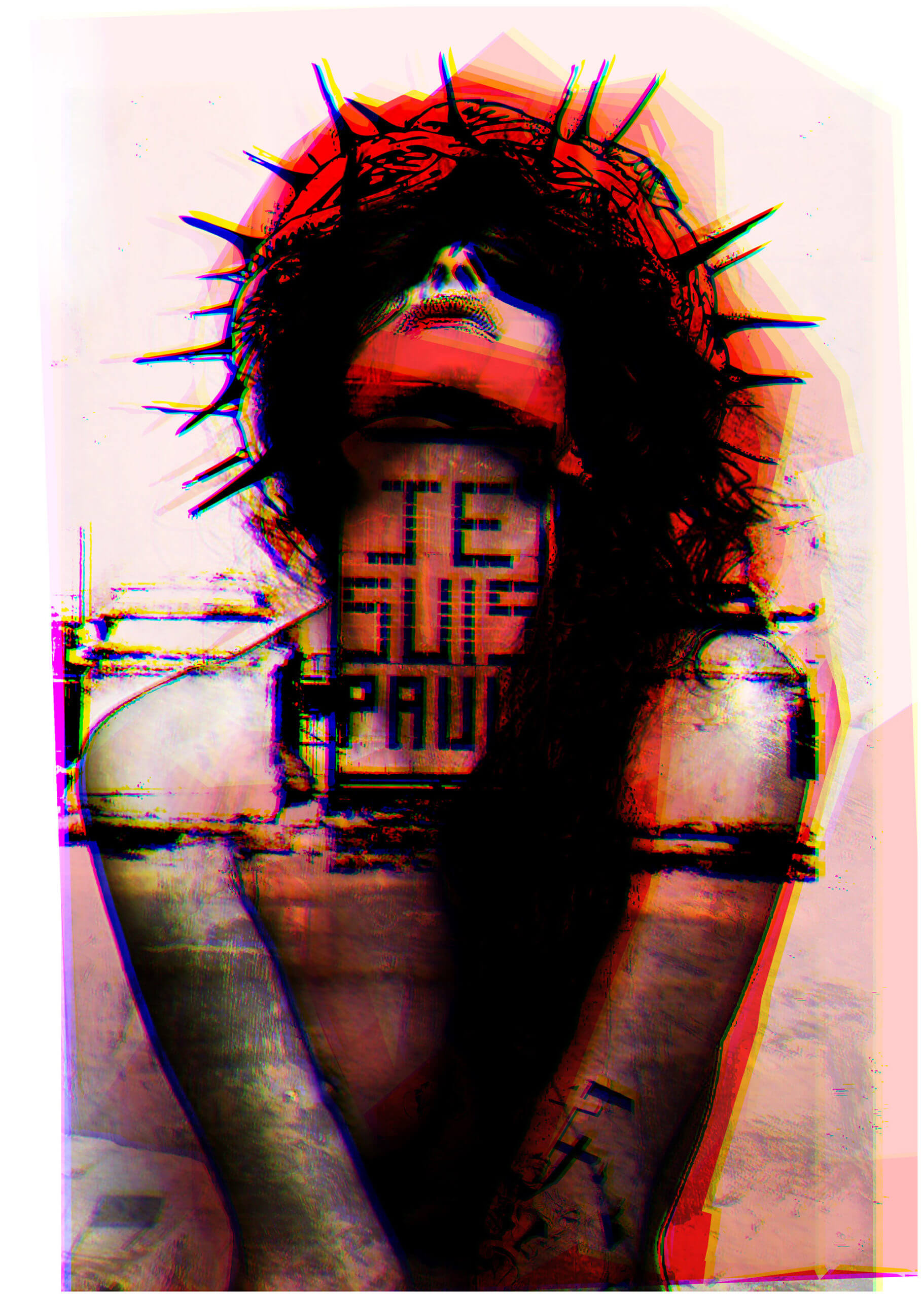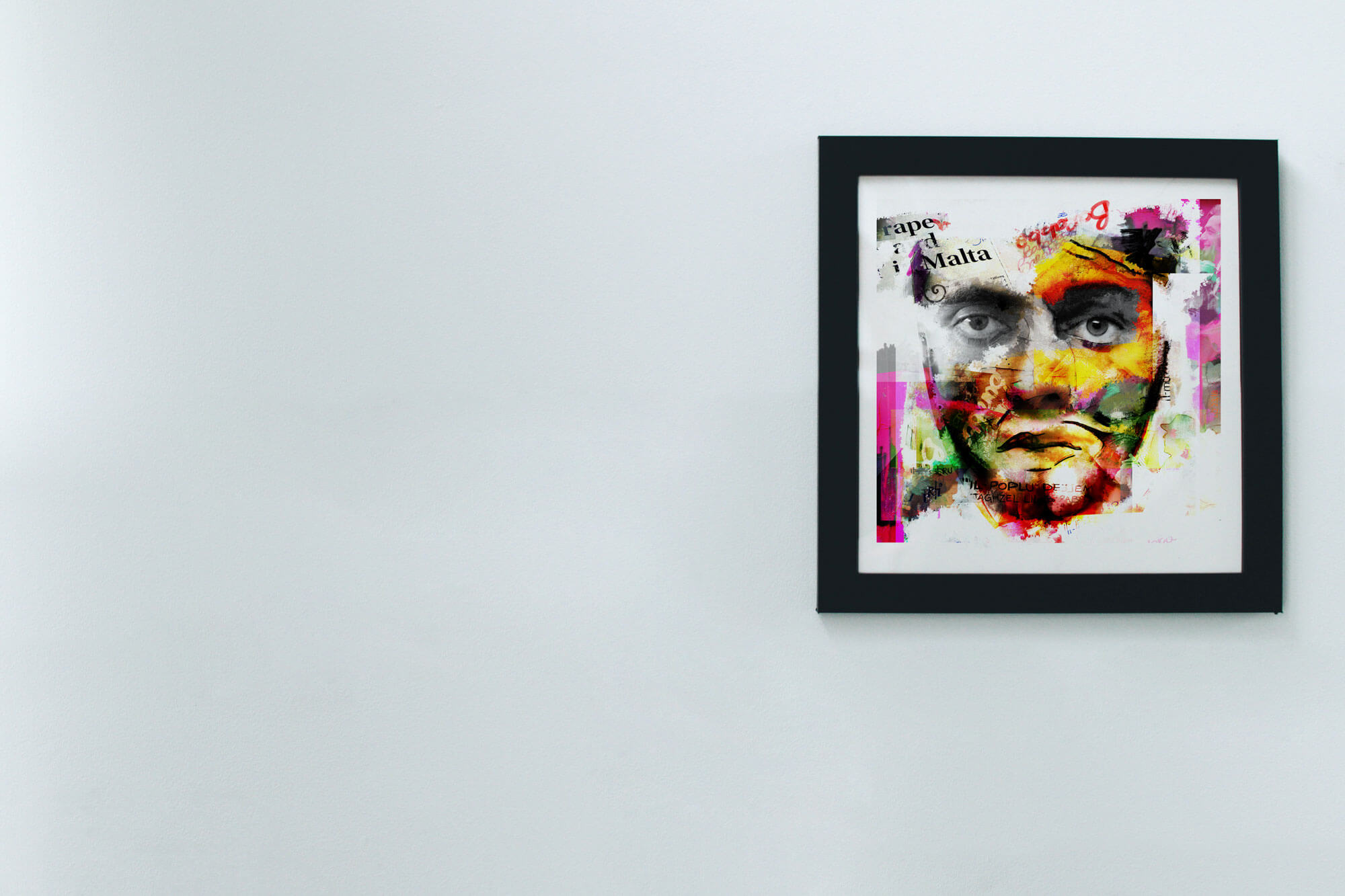
This intimate project presents a compelling dual narrative in “First Breath” and “Fear” through the intricate digital collages of Pawlu Mizzi. Demonstrating his expertise in digital image manipulation, graphic design, and printing, Mizzi meticulously constructs each piece by layering digitised elements, crafting complex compositions that go beyond photographic realism to encapsulate his narrative vision.
“First Breath” and “Fear” are deeply influenced by the haunting melodies of Explosions in the Sky’s “First Breath After Coma” and Mogwai’s “Mogwai Fear Satan.” These instrumental post-rock tracks serve as emotional and thematic anchors, enriching the depth and immersive quality of Mizzi’s creative process. Digital art, in his hands, becomes a mediumistic tool to connect with the intangible, forming a tangible narrative that goes beyond mere visual aesthetics.
Mizzi’s technique of requalifying existing images through layers of textures and colours results in a rich tapestry that invites viewers to explore the deeper meanings within each piece. This layering creates an immersive experience, where the interplay of digital elements forms a cohesive whole, emphasizing the intricate and multifaceted nature of his artistic message.
Presented together, these artworks offer a unique exploration of human existence, from birth to death and transcendence. “First Breath” celebrates new beginnings, depicted through warm golden landscapes and serene blues, with vibrant colours symbolising the dynamic energy of creation. In contrast, “Fear” illustrates transformation, with a poised, pallid figure surrounded by an ethereal glow, symbolising fear as a catalyst for change rather than a paralysing force.
The narratives of “First Breath” and “Fear” are not definitive but instead encourage ongoing personal and collective dialogue, inviting viewers to move beyond simple analysis. An animated loop complements the artworks, reviving the conceptual essence of Mizzi’s work and facilitating a deeper engagement with the themes presented.
As you journey through these illuminated narratives, you are invited to a path of self-discovery and renewal. Here, fear is transformed into a guiding light, and each breath signifies the dawn of new possibilities, offering a contemplative experience across space and time.
The artworks are now on display at the Mdina Cathedral Museum until August 23rd, 2024, open Monday to Saturday: 9:30 AM – 4:30 PM (Last Entrance at 4:15 PM) and closed on Sundays and Public Holidays. The Project patrons are The Mdina Metropolitan Chapter, Montaldo Insurance Agency Limited and Square Consulting Ltd.







